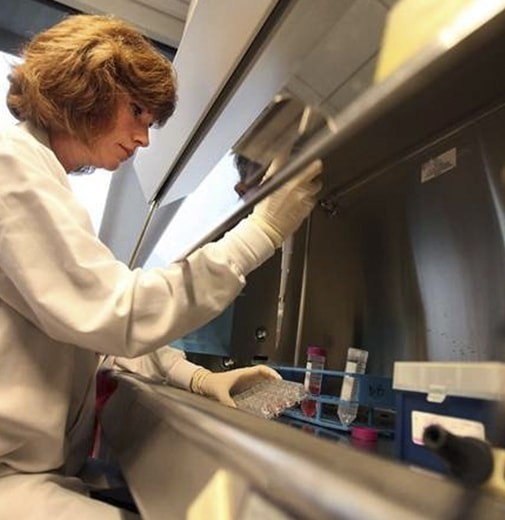
A spectrophotometer is one of the most common pieces of analytical equipment in a scientific laboratory. It measures the amount of light energy at specific portions of the spectrum as it passes through a sample, measured either in the transmittance of light energy or the amount absorbed (absorbance). Spectrophotometers have a broad range of uses for both qualitative and quantitative measuring, primarily made up of three components:
- Source: the origin of the light energy used. Most common spectrophotometers have visible and ultraviolet light sources. Others may use other sources for IR or Near-IR analysis.
- Monochromator: the internal portion of the equipment that takes the broad spectrum of light from a source and translates it into the single (mono=one) wavelength needed for the analysis
- Detector: measures absorption of light photons after passing through the sample
Spectrophotometer calibration and maintenance are important to ensure the accuracy of these highly critical processes. Read on to learn more about spectrophotometer maintenance and calibration.
Sample Compartment Maintenance and Cleanliness
The sample compartments for a spectrophotometer receive vessels called cuvettes made from plastic, borosilicate glass, or quartz. It is important to keep the sample compartments and the cuvettes clean for accurate operation. Additional maintenance including cleaning or adjusting of the monochromator should only be performed by a qualified service technician. Fundamental end-user steps to maintain proper operation include:
- Don’t pipette in the sample compartment. Spillage could obstruct the light path to the detector causing erroneous readings.
- Clean glass and quartz cuvettes with purified water after use, and wipe with lint-free paper or air dry.
- Store cuvettes in their box between uses.
- Confirm that there are no obstructions in the sample compartment or seal.
Lamp Life and Effect on Readings
The lamp source delivers high-intensity light at specified wavelengths, from ultraviolet and the visible light spectrum. Spectrophotometer lamp life should be monitored and replaced when near its rated lifespan. Proper maintenance and calibration can provide assurance that the equipment is operating within specification, but nothing can extend lamp life. That’s why you should turn off source lamps when the equipment is not in use. One of the most tell-tale signs of lamps operating at the end of life is erratic readings, or noise as it is referred to, as light energy begins to fade. Calibration data is key to mitigating the risk of inaccurate data and maintaining consistent readings at all periods of lamp life.
Annual Calibration
A properly calibrated device is a requirement for medical testing and other industrial regulations, and records may be required for regulatory standards or audit requirements. A spectrophotometer calibration includes NIST-traceable standards used at known absorbance values under specific wavelength settings. This proves linearity, independent of the absorbance you will be testing afterward and verifies detector accuracy for both visible and ultraviolet sources. Additionally, standards such as a holmium oxide filter, ensure that the wavelength accuracy itself is within specification confirming proper operation of the monochromator. Baseline noise data identifies potential errors in readings and show possible indications of lamp-life issues.
Technical Safety Services delivers deep expertise in laboratory calibration, maintenance, and certification including spectrophotometer calibration services. To learn more, contact us today.

